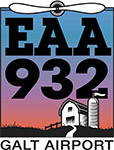What should a private pilot student look for in a flight instructor?
SPEAK UP if you have questions or concerns about the quality of your flight instruction. You should not tolerate rudeness, a bad attitude, unsafe practices, or substandard training. If you don’t feel comfortable discussing the problems with your CFI, talk to their manager/supervisor, another instructor, another pilot or another flight school. If you have serious safety concerns, find a new CFI immediately. You can also report safety issues to the FAA Hotline at the following link: https://www.faa.gov/about/office_org/headquarters_offices/aae/programs_services/faa_hotlines

